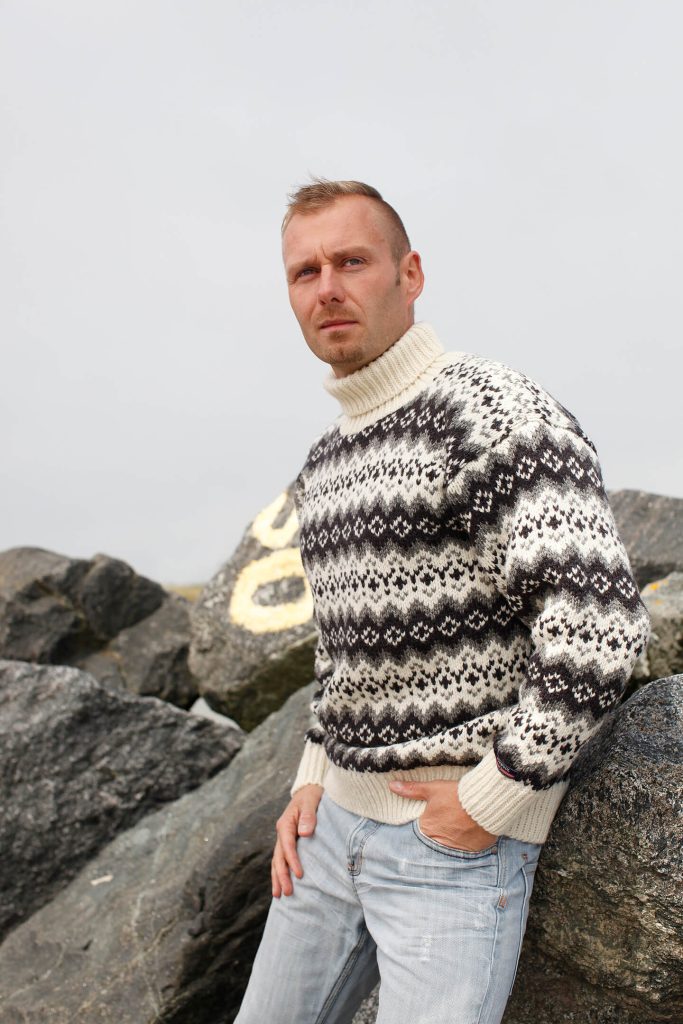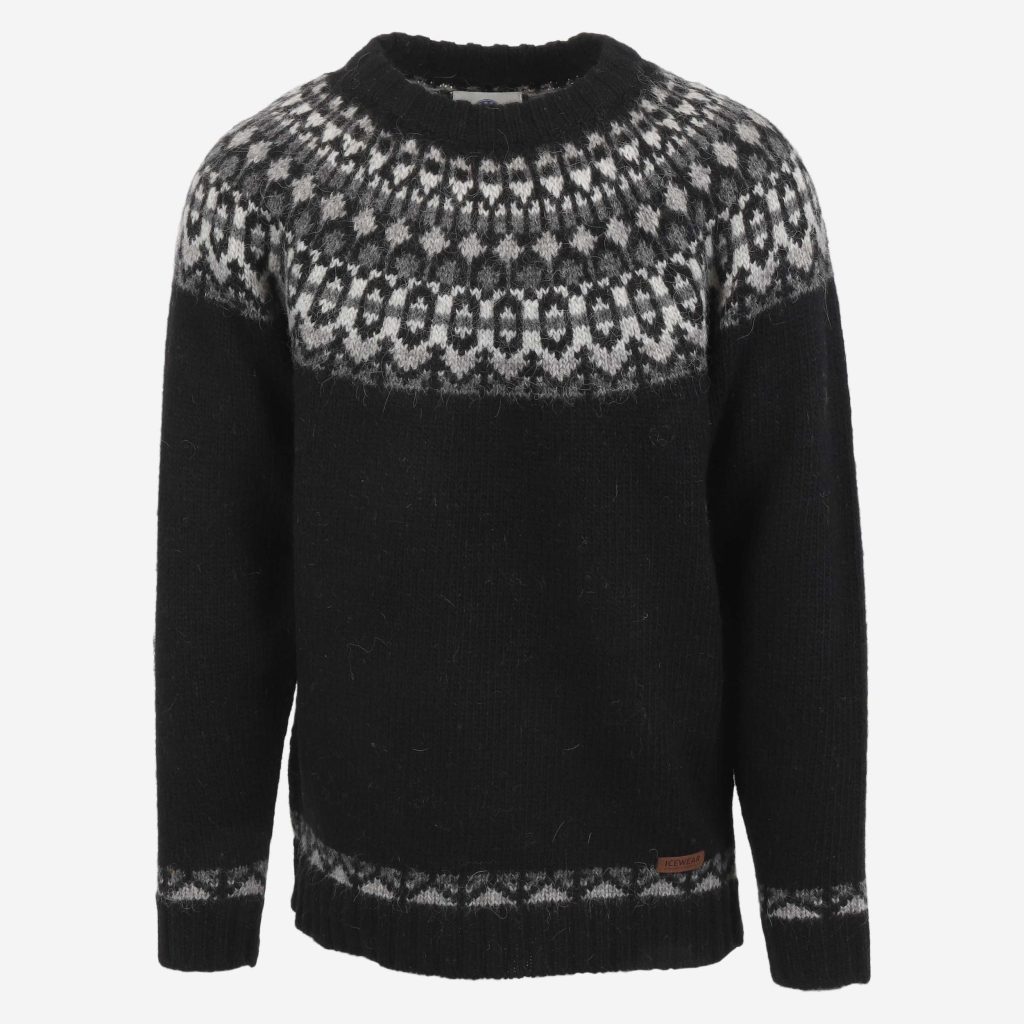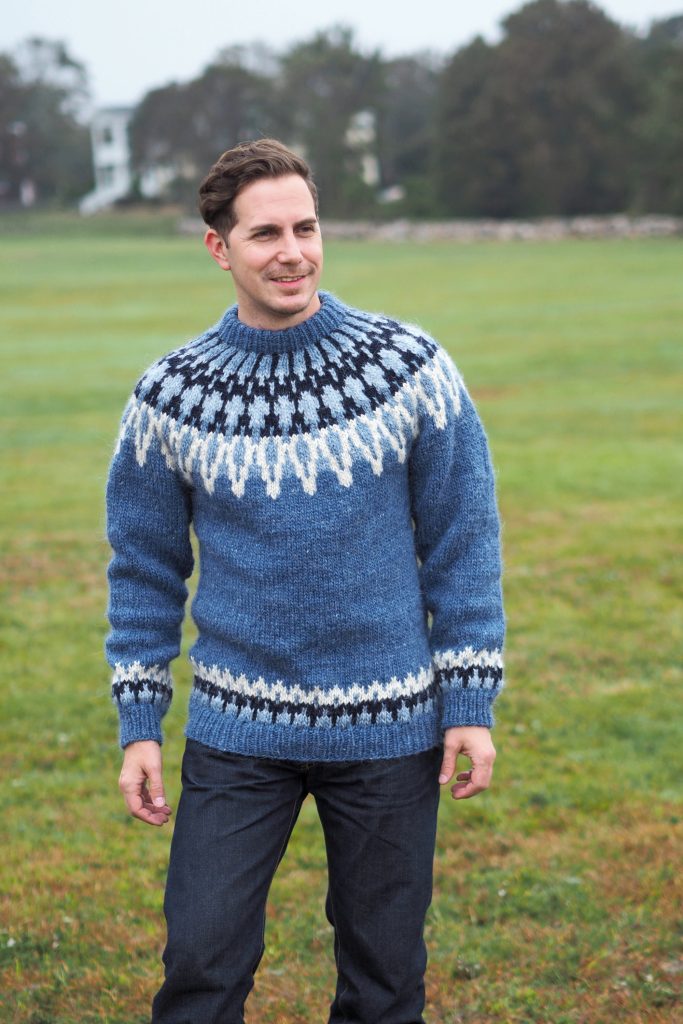Introduction
Iceland wool sweaters – In the land of fire and ice, where rugged landscapes meet ancient traditions, Icelandic wool sweaters stand as a testament to both the resilience of the people and the natural beauty of the island. These iconic garments, known locally as “lopapeysa,” have become synonymous with Icelandic culture, embodying centuries of craftsmanship, heritage, and a deep connection to the land.

A Tapestry of Tradition:
The history of Icelandic wool sweaters traces back to the island’s settlement over a thousand years ago. In the harsh and unforgiving climate of Iceland, where winters are long and temperatures plummet, wool quickly emerged as a vital resource for survival. Icelandic sheep, a breed uniquely adapted to the island’s harsh conditions, provided the raw material for clothing, insulation, and sustenance.
The art of knitting arrived in Iceland with the early settlers, who brought with them the skills and techniques passed down through generations. Over time, Icelandic knitters developed their own distinct style, incorporating local motifs, patterns, and natural dyes inspired by the island’s rugged landscapes and rich folklore.
The Craftsmanship Behind the Sweater:
Central to the creation of Icelandic wool sweaters is the use of “lopi,” a type of wool known for its exceptional warmth, water resistance, and lightweight feel. Unlike traditional yarn, lopi is spun with both the inner and outer fibers of the wool, creating a lofty, insulating material that traps heat and repels moisture—a necessity in Iceland’s unpredictable climate.
The construction of an Icelandic wool sweater is a labor-intensive process that requires skill, patience, and attention to detail. Each sweater is typically knitted in the round, seamlessly from the bottom up, using circular needles and a combination of knit and purl stitches. The distinctive yoke design, featuring intricate patterns and geometric motifs, is often the focal point of the sweater, showcasing the knitter’s artistry and creativity.
A Symbol of Icelandic Identity:
Beyond their practical utility, Icelandic wool sweaters hold a deep cultural significance for the people of Iceland. Historically worn by farmers, fishermen, and outdoor enthusiasts, these sweaters are a symbol of resilience, resourcefulness, and a deep connection to the land.
Today, Icelandic wool sweaters have transcended their humble origins to become a beloved fashion staple, both at home and abroad. From cozying up by the fire on a cold winter’s night to exploring the wild beauty of Iceland’s countryside, these sweaters offer warmth, comfort, and timeless style for every occasion.
Caring for Your Icelandic Wool Sweater:
To ensure that your Icelandic wool sweater remains a cherished wardrobe staple for years to come, proper care is essential. Here are some tips for keeping your sweater looking its best:
- Hand wash gently: To preserve the natural oils and lanolin in the wool, hand wash your sweater in lukewarm water using a mild detergent or wool wash. Avoid wringing or twisting the sweater, as this can cause stretching and distortion.
- Dry flat: After washing, gently squeeze out excess water from your sweater and lay it flat on a clean towel to dry. Avoid hanging your sweater, as this can cause it to lose its shape.
- Store with care: When not in use, store your Icelandic wool sweater folded in a cool, dry place away from direct sunlight and moisture. Avoid storing it in plastic bags or containers, as this can trap moisture and lead to mildew.

A Legacy of Resilience:
The story of the Icelandic wool sweater is deeply intertwined with the island’s harsh climate and rugged terrain. For centuries, Icelandic sheep have roamed freely across the countryside, their thick, dual-layered wool providing protection against the elements. It was this wool that became the cornerstone of Icelandic textile tradition, woven into the fabric of everyday life for the island’s inhabitants.
In the 17th century, as knitting gained popularity in Iceland, the first iterations of the lopapeysa began to emerge. Initially crafted for practical purposes—to keep farmers, fishermen, and shepherds warm during long days spent outdoors—these early sweaters were simple in design, yet robust in construction. They featured basic patterns and motifs passed down through generations, each stitch a testament to the skill and ingenuity of Icelandic knitters.
The Artistry of Icelandic Knitting:
Central to the allure of the Icelandic wool sweater is the artistry of its construction. Knitted seamlessly in the round using circular needles, each sweater is a masterpiece of technique and precision. The intricate yoke patterns, inspired by the natural world and traditional Icelandic folklore, are often the focal point of the garment, drawing the eye with their mesmerizing symmetry and detail.
Traditional motifs such as the “lópa” (icelandic sheep), “hjarta” (heart), and “stjarna” (star) are woven into the fabric of the sweater, each carrying its own symbolic meaning and cultural significance. These motifs not only serve as decorative elements but also reflect the deep connection between the Icelandic people and their surroundings, celebrating the beauty and bounty of the natural world.

From Tradition to Trend:
In recent years, Icelandic wool sweaters have experienced a resurgence in popularity, both at home and abroad. Once confined to the realm of practical workwear, these iconic garments have transcended their humble origins to become coveted fashion statements, gracing runways, magazine covers, and celebrity wardrobes around the world.
Yet, despite their newfound status as fashion staples, Icelandic wool sweaters remain true to their roots, embodying the timeless elegance and rugged charm of their homeland. Whether worn on a chilly autumn hike through the Icelandic highlands or paired with jeans and boots for a cozy evening by the fire, these sweaters offer both style and substance, wrapping the wearer in a cocoon of warmth and heritage.
Caring for Your Icelandic Wool Sweater:
To ensure that your Icelandic wool sweater remains a cherished companion for years to come, proper care is essential. Here are some tips for maintaining its beauty and integrity:
- Hand wash gently: Fill a basin with lukewarm water and add a small amount of mild detergent or wool wash. Gently agitate the water to create suds, then submerge your sweater and swish it around to loosen any dirt or debris. Avoid rubbing or wringing the sweater, as this can cause stretching or damage to the fibers.
- Rinse thoroughly: After washing, drain the basin and refill it with clean water. Submerge your sweater and gently press down to remove any remaining soap. Repeat this process until the water runs clear and there are no traces of detergent left.
- Dry flat: Lay your sweater flat on a clean towel and gently press out excess water. Roll up the towel and press down to absorb more moisture, then unroll the towel and reshape the sweater to its original dimensions. Lay it flat on a dry towel or drying rack away from direct heat or sunlight, allowing it to air dry completely.
- Store with care: When not in use, store your Icelandic wool sweater folded in a cool, dry place away from direct sunlight and moisture. Avoid hanging it on a hanger for extended periods, as this can cause it to lose its shape over time.

Conclusion
By following these simple tips, you can ensure that your Icelandic wool sweater remains a treasured heirloom for generations to come, carrying on the legacy of craftsmanship, tradition, and warmth that has defined Icelandic culture for centuries. So whether you’re traversing the rugged terrain of Iceland’s highlands or simply embracing the cozy comforts of home, wrap yourself in the timeless elegance and heritage of an Icelandic wool sweater—a garment as enduring and timeless as the land that inspired it.

